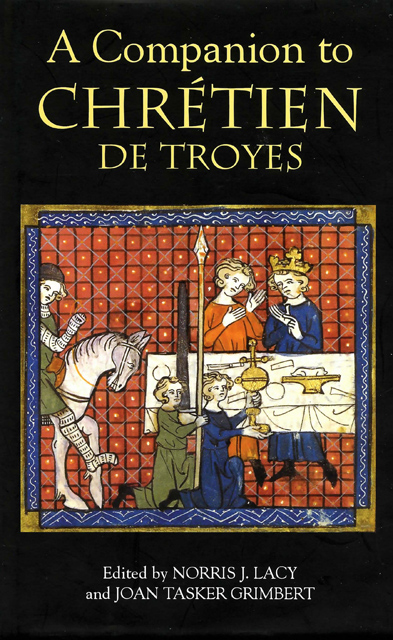9 - Erec et Enide: The First Arthurian Romance
Published online by Cambridge University Press: 23 March 2023
Summary
Erec et Enide enjoys pride of place among the works of Chrétien de Troyes and in the history of medieval narrative fiction as well. First among the Champenois poet's five Arthurian romances, it also marks a new departure in medieval vernacular narrative: it is the first Arthurian romance, in contrast with the earlier romans d’antiquité, the Latin pseudo-chronicle of Geoffrey of Monmouth, the Historia regum Britanniae (c. 1137), and its vernacular avatar, the Brut of the Anglo-Norman poet Wace (1155). As regards versification, like Wace's Brut and such ‘romances of antiquity’ as the Roman de Thebes, the Roman d’Eneas, and the Roman de Troie, Chrétien's narratives are in rhyming octosyllabic couplets; yet he defied the metric constraints of the octosyllabic line to achieve a syntactic suppleness prefigurative of the kind of prose that emerged around 1200 in Old French fiction and chronicle. Chrétien was also an innovator in terms of form. Whereas Geoffrey and Wace depict the rise, political and social fortunes and ultimate fall of Arthur's realm, Chrétien's Arthurian court assumes prominence only at the beginning and end of the story and sporadically in between. These ‘Arthurian scenes’ are largely ceremonial loci at which to initiate heroic exploits, positively sanction their completion, or else to bring the adventuring hero momentarily into contact with the court. Chrétien thus sacrifices the comprehensive Arthurian historia elaborated by Geoffrey and Wace, choosing instead to portray his eponymous hero or couple against an attenuated background of Arthurian pseudo-history. He relinquishes the ‘epic’ military campaigns featured by Geoffrey and Wace in favour of heroic episodes linked by a developmentally meaningful design, a format well exemplified in Erec et Enide.
At Easter, King Arthur decrees the observance of the customary hunt of the White Stag. His nephew Gauvain warns against it, because according to that custom the slayer of the stag must kiss the loveliest maiden at court, and the five hundred young knights will each be eager to assert in combat the supreme beauty of his own beloved. Yet Arthur insists, and the hunters all depart save Erec who, hastening after them, suddenly offers to accompany Queen Guenevere and her lady-in-waiting. They encounter an armed knight, his maiden, and a malicious dwarf who strikes first the Queen's attendant, then Erec. The latter, unarmed, vows to pursue the knight, procure arms and avenge the insults.
- Type
- Chapter
- Information
- A Companion to Chrétien de Troyes , pp. 103 - 119Publisher: Boydell & BrewerPrint publication year: 2005
- 1
- Cited by

